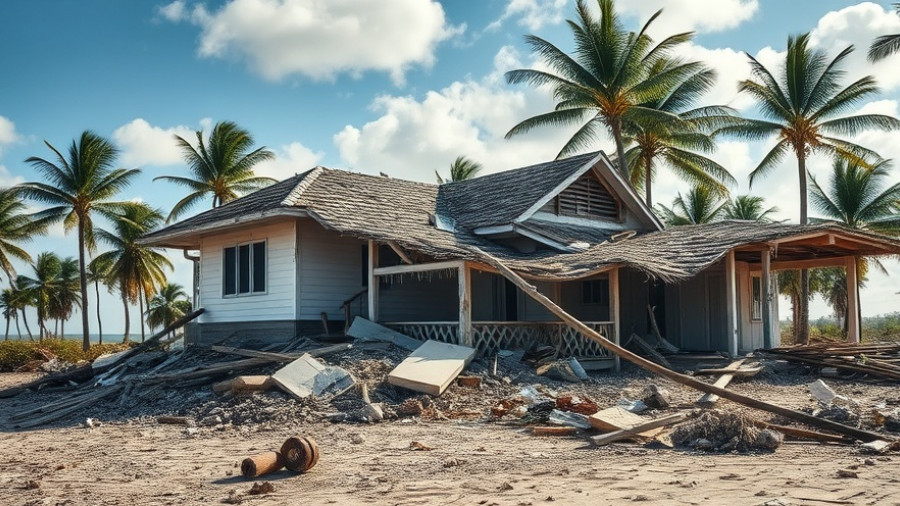
Understanding Typhoon Damage and Your Homeowners Insurance
If you're a homeowner in South Carolina, it’s crucial to understand how homeowners insurance covers various natural disasters, including typhoons. Although typhoons are less frequently discussed than hurricanes, they can cause significant damage, particularly to coastal properties. A standard homeowners insurance policy generally covers wind damage but often excludes flood-related damages, which can lead to costly out-of-pocket expenses for homeowners.
What Exactly Is a Typhoon?
A typhoon is essentially a hurricane that forms in the Pacific Ocean, rather than the Atlantic. Though these storms might not make headline news in the U.S. as often as hurricanes do, they occur frequently in the Pacific regions and can affect U.S. territories like Guam and American Samoa. Recent examples highlight the dangers of typhoons: in 2025, Typhoon Halong devastated parts of western Alaska, serving as a reminder of why understanding insurance coverage against such disasters is vital.
How Does Your Insurance Cover Typhoon Damage?
While homeowners insurance typically covers damages incurred from wind during a typhoon, as per general guidelines from reputable insurers, there are important exceptions to understand:
- Wind Damage Coverage: Your policy should reimburse you for damages such as destroyed shingles or damage from flying debris. However, if you reside in a wind-prone area, check for specific windstorm exclusions that could affect your claim.
- Windstorm Deductibles: In some cases, insurers in high-risk areas may apply a separate deductible specifically for windstorm damage, which can be significantly higher than your typical deductible.
- Flood Damage Exclusion: Unfortunately, flood damage caused by a typhoon is not covered under a standard homeowners policy. Homeowners often find themselves financially vulnerable because the insurance does not cover damages stemming from rising water levels.
Important Considerations and Tips
For South Carolinians looking to ensure adequate coverage:
- Review Your Policy: Always read through your insurance policy to understand what is specifically covered and any exclusions that might apply.
- Consider Flood Insurance: Given that most homeowners insurance policies exclude flood damage, it may be prudent to consider purchasing flood insurance, especially if you live in a coastal area.
- Document Everything: In the event of a storm, keep meticulous records of any damages. Photos and inventory lists can be invaluable when preparing your claim.
- Utilize Resources: Organizations like the National Flood Insurance Program offer resources and information about securing flood coverage, which can be pivotal after a natural disaster.
What To Do After Your Property Is Damaged
If you're left dealing with the aftermath of a typhoon, knowing how to navigate the claims process can alleviate stress. Here are key steps to follow:
- Contact Your Insurer: Notify your insurer as soon as possible to start your claim. Be clear about what damages occurred and how they happened.
- Get a Damage Estimate: Assess the extent of the damage with a qualified professional, which can further strengthen your claim.
- Stay Organized: Keep all correspondence, receipts, and documentation related to your claim for future reference.
In conclusion, understanding how homeowners insurance works in relation to typhoon damage is essential for effective financial planning. Make sure to prepare your home and review your coverage well before storm season approaches.
For more personalized guidance on how to navigate your insurance claims after a typhoon or any property damage, reach out for comprehensive support—we're here to help!
 Add Row
Add Row  Add
Add 




Write A Comment